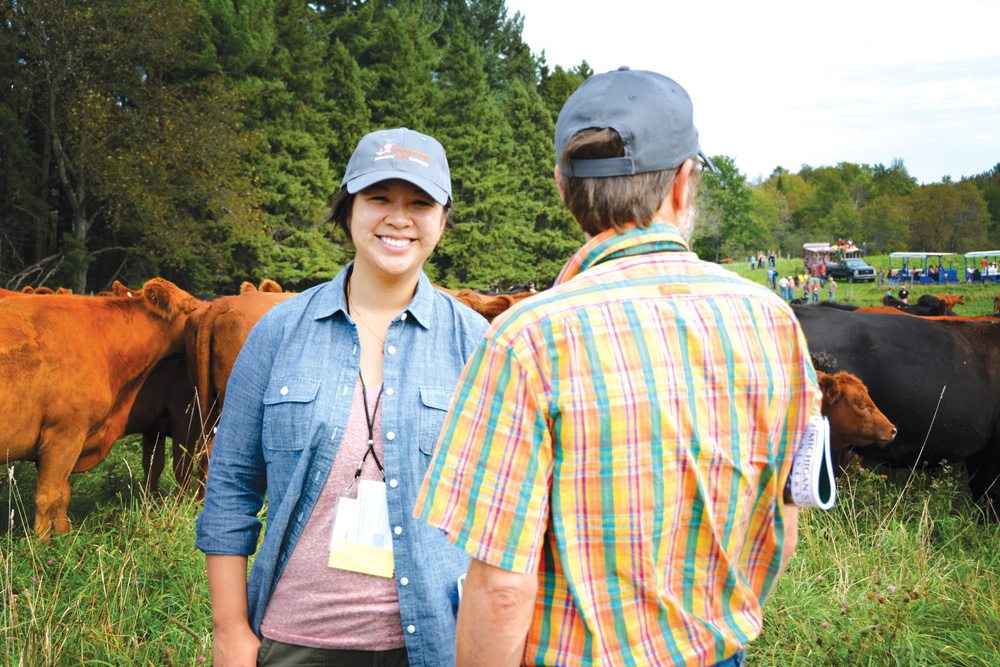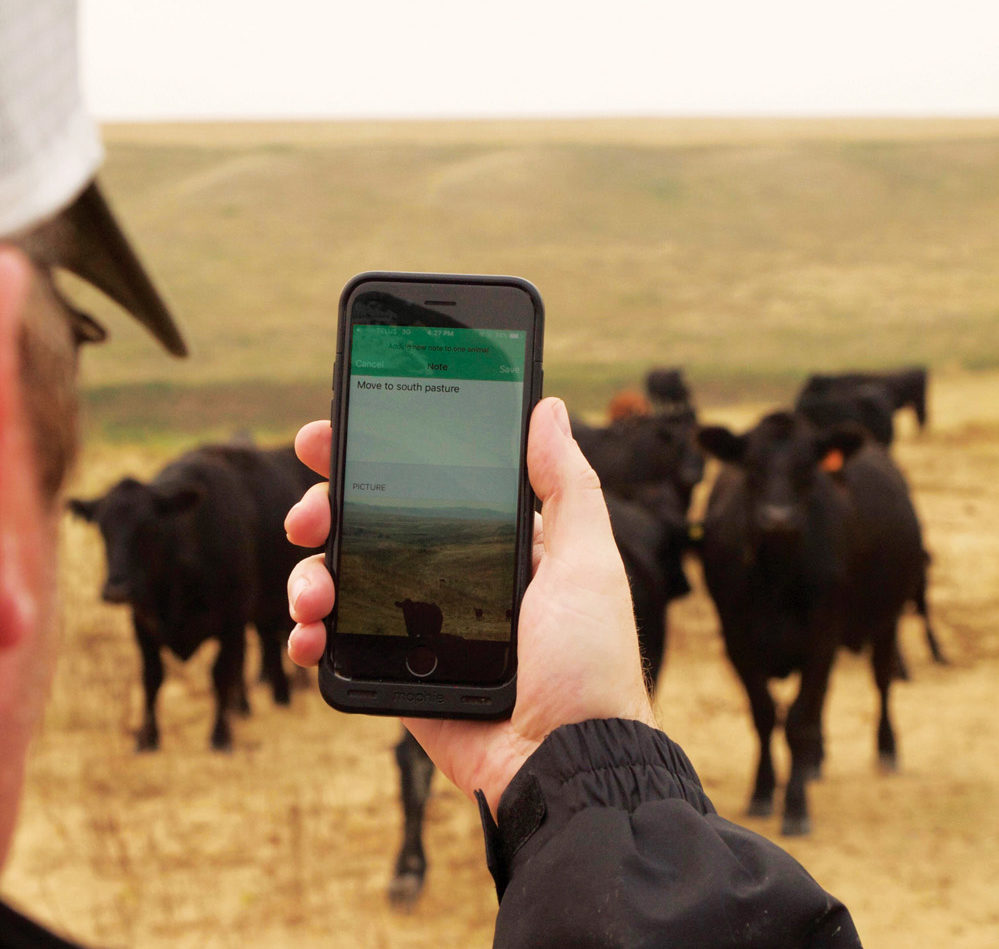Feeding cattle in sunny southern Alberta offers an opportunity to producers interested in alternate energy sources. Les Wall and his family saw this potential with their bright location and have recently installed solar technology to help power part of their operation.
Les and his wife Lisa started KCL Cattle Company in 1999, beginning with their original feedlot north of Lethbridge, Alta.
“Over the years we’ve grown it quite a bit,” said Wall. In 2009, they purchased their second location at Coaldale, and in 2016 they increased their land base. Wall is also one of the five partners of Ceylon Gap Feeders, a groundbreaking feedlot in southern Saskatchewan.
Read Also

Body condition, nutrition and vaccination for brood cows
One of the remarkable events of the past century related to ranching has been the genetic evolution of brood cows….
Their Lethbridge location has a 9,000-head capacity, and their Coaldale location 7,000-head with plans for expansion to 15,000 head. They finish all their cattle, most of which are processed at the Cargill facility in High River, Alta.
The next generation plays an important role in the day-to-day running of KCL. “It’s definitely a family operation,” said Wall. Their daughters, Karleen Clark and Celia Granberg, are involved with the feedlots, as well as Karleen’s husband Jared.
The Walls are always looking for new ways to make their feedlots more efficient. Recently, the use of solar panels to help generate power caught Wall’s attention. With funding from a provincial program to encourage the development of solar power, he was able to put this plan into action.
“With the programs that the Alberta government has currently running, it made some sense to do it, and we think as we go along in the years it will probably be more viable than it is today probably. So we’re looking into the future.”
“I started phoning a few of my peers who have solar panels on their yards, so I talked to them and then I met with a couple companies that are installing them,” he explained. In the end he went with Western Solar, based out of Calgary. They design and install solar systems for homes and businesses, with options for a variety of agricultural installations mounting panels on the ground and on rooftops, depending on the operation.
The On-Farm Solar Photovoltaics Program offered by Alberta Agriculture and Forestry is geared towards projects such as Wall’s. Originally funded under Growing Forward 2, this program is now available under the federal Low Carbon Economy Fund, which includes $81 million for agriculture-specific environmental programs for Alberta producers over the next four years.
It covers $0.75 per watt to a maximum of 35 per cent of the eligible cost of projects generating 100 kilowatts or less. The rate drops to $0.56 per watt to a maximum of 27 per cent of the eligible cost for projects between 100 and 150 kilowatts. The installations must be tied to the grid and installed on a site with a farm, grain drying or irrigation distribution rate class or equivalent. For operations with different rate classes, Energy Efficiency Alberta’s Residential and Commercial Solar Program offers similar funding for solar systems installed on homes and businesses.
Other municipal and provincial programs are available in Alberta, depending on location, purpose and type of solar system required.
Other provinces are exploring options for funding on-farm solar projects, some of which may be administered by Crown corporations or energy providers. There are many municipal incentive programs for solar projects across Canada, though few are geared towards projects on agricultural operations.
After Wall contacted Western Solar, representatives from the company visited the Lethbridge lot to help select a location for the ground-mounted solar panels. Three banks of panels that make up the heart of the solar system were installed in June. “We put it on top of a hill that we don’t really use for anything else, so it made good sense, so it’s facing directly kind of south and it was a good location for it,” said Wall.
After his first few months with this new technology, Wall has no complaints. “It’s been pretty seamless,” he said. “We just had to get things wired into the electrical system.” Western Solar took care of that aspect of the installation.
“We had to change one of our meters so when we’re not using the power we can put it back into the grid, which is important for us.”
KCL’s location in southern Alberta is suited for solar energy collection. “We have quite a bit of sunlight compared to, I’d say, Red Deer or Edmonton,” said Wall. “This is a sunny part of the world, and as you go east I think Medicine Hat has even more sun. I think this is a good area for it.”
This was evident in the power created, which varies depending on the number of sunny days. “We have an app and you can watch the power being produced. As soon as you get an overcast day you can see it dip down pretty quick,” said Wall.
For anyone considering a similar installation he says you need to realize that this isn’t a constant source of power. “It doesn’t store power, it just creates power during the sunlight hours.”
Given the early success of these panels, Wall would consider installing panels in other locations but for the economics. “Right now we’ve maxed out all our funding for the program, so if they announce new funding we’d probably look at it again.”
“Honestly, a stand-alone right now without funding, it doesn’t pencil out great, so with the funding it does help,” he explained. “We have a lot of pivot irrigation, and that’s quite a big cost for us in the summer. If the cost of the solar panels and that come in line where we could see a return, we’d probably do more of that at different irrigation sites.”
To anyone interested in generating energy through solar panels for their operations, Wall recommends researching it thoroughly beforehand. “Definitely do your homework and get someone that’s well recommended to install them, that has a track record, and then just do your math and see how long the return is on investment, and see if you can access that funding,” he said. “I think that would be the key for any producer. If they can access the funding, I think it makes some sense to it.”
Power is the main reason for this investment but Walls says there is an environmental benefit, as well. “I think as cattle producers we’re always trying to do the best that we can for the environment. That’s why I think we choose the technologies that we do,” he said.
“I think cattle feeders are very good at doing that, and sometimes the public doesn’t realize why we do what we do. We do care about the environment, and we try to be as efficient as possible.”

















